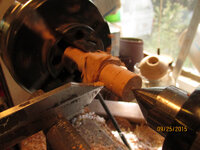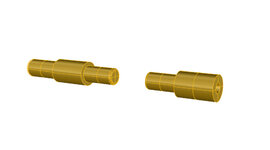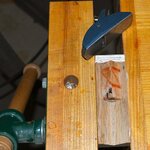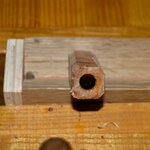TurtleTom
Member
I was drilling holes first then turning on the mandrel. That just doesn't seem right to me. Even at high speed the blanks will seize several times and I keep having to tighten the mandrel saver and take lighter cuts. The cutting is just too slow.
So I changed it around so I now turn the blanks down to the flat sides before I ever drill the holes. There is no danger of increasing your chances of a bad drill through because the flat sides were the limits anyway.
I have to turn it once in the chuck to accomplish this but it is still a lot faster than the mandrel. I'm using the parting tool to do all the turning as it seems to go quicker with less thrown shavings than my 8mm round carbide cutter. I tried this because when I had a fracture occur it always happened when I was approaching the end from the middle. The stress of pushing I suppose. So I started doing the ends first with the parting tool and after a while just kept going. When it's all round I drill it where it is.
After gluing, I trim it square with a boring bar, if that piques any interest.
So I changed it around so I now turn the blanks down to the flat sides before I ever drill the holes. There is no danger of increasing your chances of a bad drill through because the flat sides were the limits anyway.
I have to turn it once in the chuck to accomplish this but it is still a lot faster than the mandrel. I'm using the parting tool to do all the turning as it seems to go quicker with less thrown shavings than my 8mm round carbide cutter. I tried this because when I had a fracture occur it always happened when I was approaching the end from the middle. The stress of pushing I suppose. So I started doing the ends first with the parting tool and after a while just kept going. When it's all round I drill it where it is.
After gluing, I trim it square with a boring bar, if that piques any interest.




